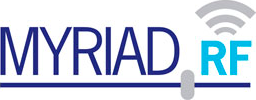@dchard I guess you have a fixed-frequency 10MHz clock. My feeling is that in your case it may be much more easy to build a small clock multiplier using an NB3N511 or something like that to quadruple your 10MHz input frequency. This would be pretty cheap, fast to build and probably way easier than fiddling around with the gateware.
False. 10MHz will feed NIOS CPU directly, no PLL. Hence there is no need to modify gateware.
Just to be sure I am getting it right: we can actually use a 10MHz external clock source to drive the Mini without any HW or SW mods needed (except for the single 0 Ohm resistor)? Do I need to change anything in LimeSuite?
Correct.
As I wrote some time ago:
You have change reference clock from 40MHz to whatever frequency you use.
Sounds good!
Would you be so kind to point out the setting(s) in LimeSuite what is required to be set/chnaged for this (using an external 10MHz source)?
Hi @dchard,
From LimeSuiteGUI, in either SXR or SXT tabs select “Reference clock (MHz):” tab, and enter external clock frequency in MHz.
In API case you have to define the clock like:
LMS_SetClockFreq(DEVICE, LMS_CLOCK_REF, 1e7);
@Zack If the NIOS is being fed directly by the reference clock (at 10MHz) then what is the PLL on the FPGA doing?
Hi @mc955,
PLL is managing interface frequencies and phase shifts between FPGA and LMS7002M. Check Gateware Description for more information, sections 3.2 and 3.7.
I give it a thought of how to do this with the 10MHz, and after a couple of days I decided that the limitations of the Mini in terms of clocking is beyond the point where it is worth dealing with it. It is impossible to resolve the issue that it requires a HW mod all the time when I want to switch between internal and external clock source, and even when I have an external clock source the DAC resolution is insufficient anyway.
So I will just box it with a large enough heatsink (as the Mini tends to cook itself…) and just use my VSA to sync with my 10MHz reference, and use it to tune the DAC of the mini as much as the resolution allows me to.
